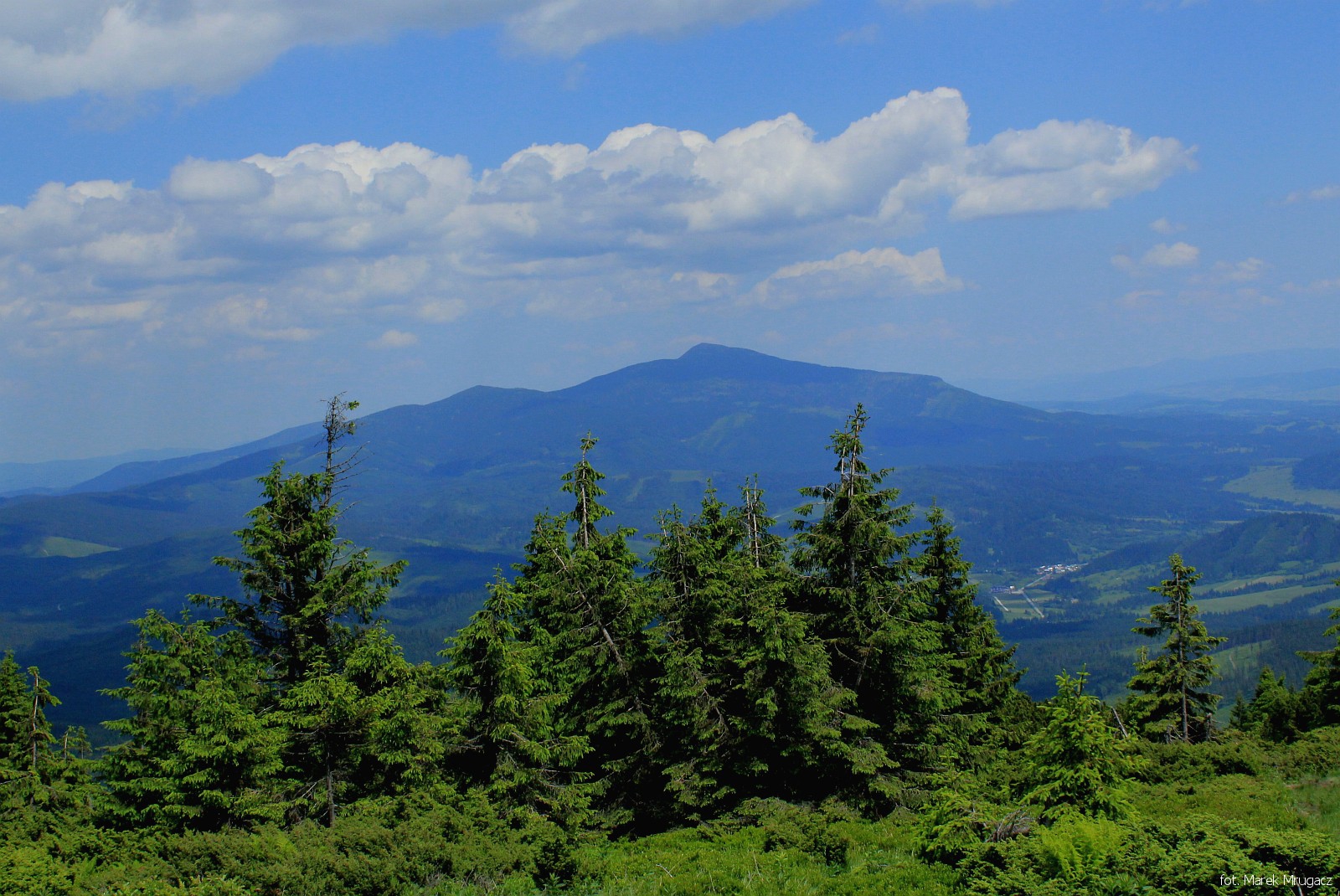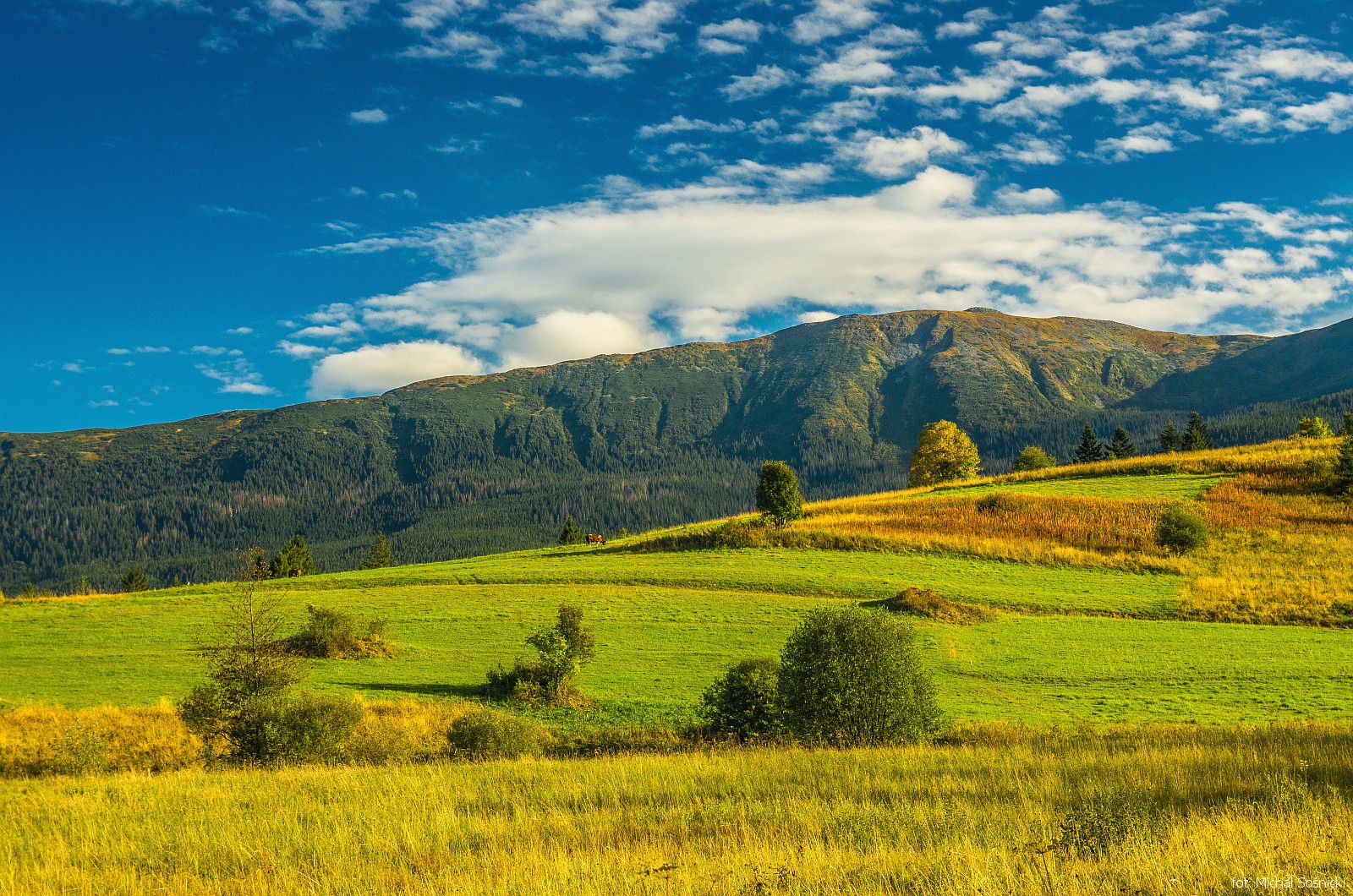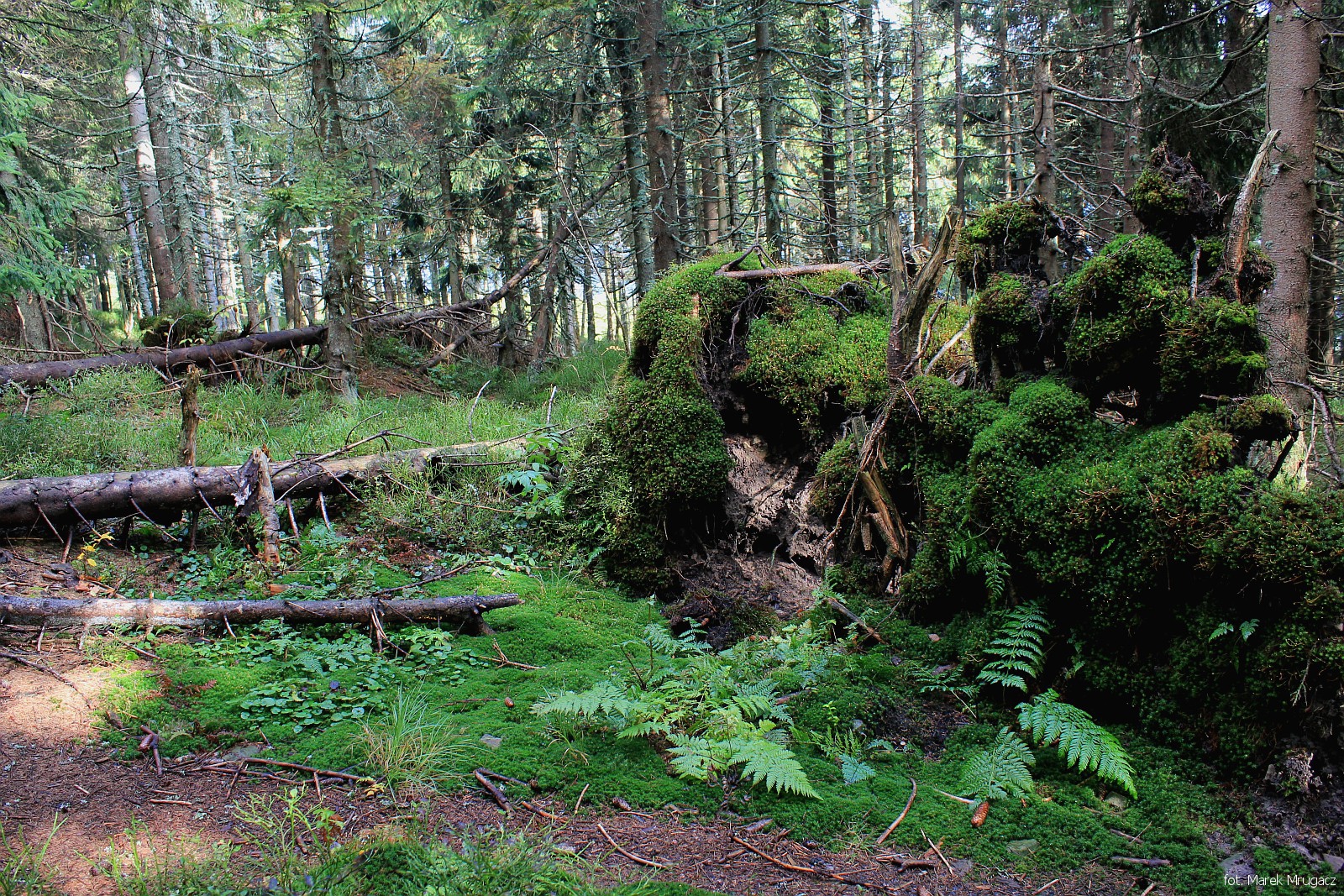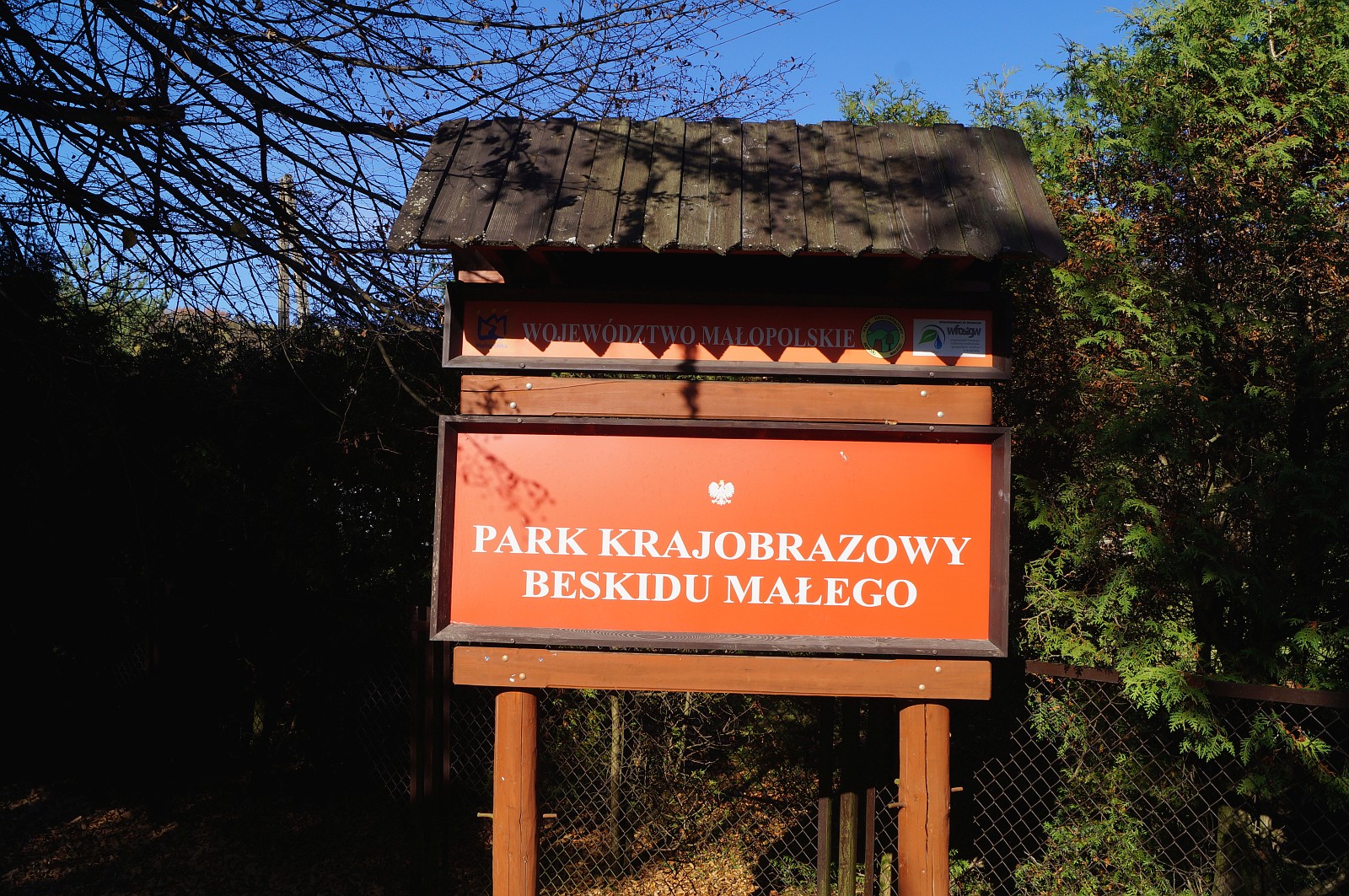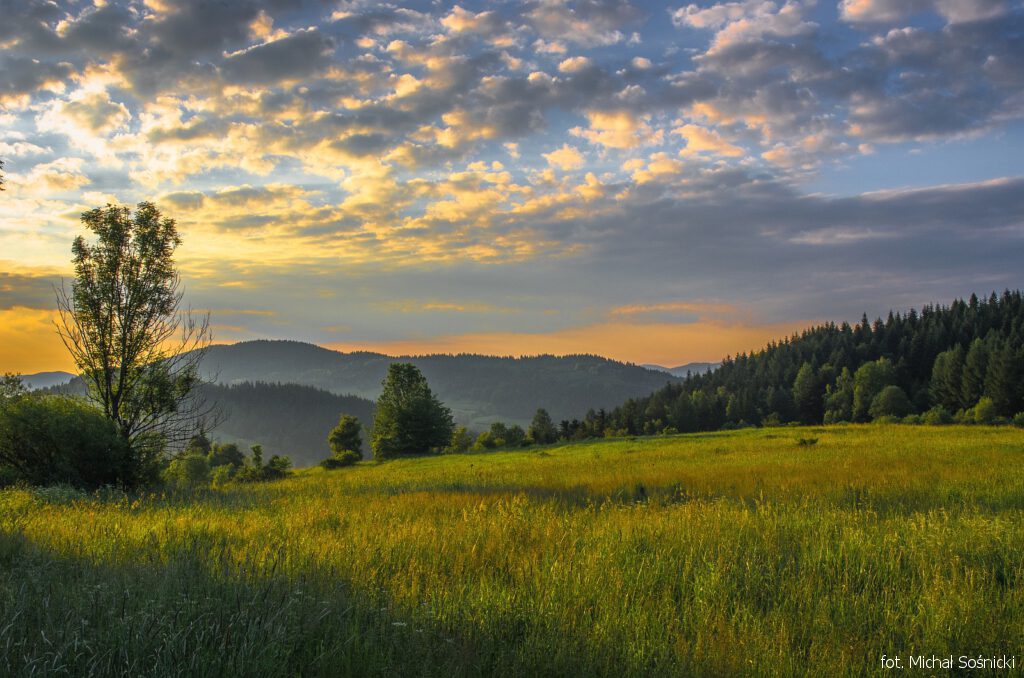Richness of Nature of the Podbabiogórze
Podbabiogórze is very rich and diversified in terms of nature. A tourist who arrives here will be able to wander in this relatively small area through beautiful forests, occupying approximately half of the county’s area and constituting its natural richness, breathe in the mountain air among dwarf mountain pine and mountain pastures in the top parts of Babia Góra, stroll through fragrant meadows full of flowers, as well as rest in the shade of trees by the refreshing waters of mountain rivers and streams, listening to the swoosh of picturesque waterfalls. All this is directly connected with a significant diversification of the local relief. The bottoms of the river valleys in the northern part of the county lie at an altitude of about 300 m above sea level, while the highest point of the county, Diablak, the summit of the ‘Queen of Beskids’, reaches 1725 m above sea level.
Babia Góra National Park (BgPN)
Babia Góra is not only a unique tourist attraction and an excellent viewpoint. It is also a true temple of nature, which unique landscape and natural values became a subject of statutory protection as early as 1954, when the Babia Góra National Park was established (as the fourth in the territory of our country). However, that is not all. The area of the ‘Queen of Beskids’ was recognised as a special place also on an international scale and in 1976 it was included in the UNESCO World Network of Biosphere Reserves. In recent years, Babia Góra has also been included in the list of sites forming part of the European ecological network ‘Natura 2000’.
One of the elements determining the natural value of the massif is the model layers of alpine flora habitats, preserved here in an exemplary way, which can be observed closely while hiking on tourist trails or from afar, admiring the panorama of Babia Góra. The following can be observed here: the highlands, the lower forest belt (700–1,150 m), the upper forest belt (1,150–1,350 m), the dwarf pine belt (1,350–1,650 m) and the alpine belt (1,650–1,725 m), which in the Polish Beskids occurs only here, and outside the Beskids, in our country, only in the Tatras and small parts of the Sudeten Karkonosze.
About 650 species of vascular plants, about 300 species of mosses and liverworts, more than 1300 species of fungi and lichens have been found in the Park so far. More than 70 species are typical mountain plants, including some that occur only here in Poland: these are Cerastium alpinum and Laserpitium archangelica (which is the symbol of Babia Góra National Park). The animal world is also very rich (4500 species and subspecies). Bears and wolves, among others, appear here, and the lynx is a permanent inhabitant of the ‘Queen of Beskids’ massif.
The area of the park can be visited only on marked tourist trails, which network (50 km) is very well developed and maintained here.
Moreover, the Babia Góra National Park has marked out 9 educational paths, presenting its natural beauty and the cultural heritage of local people. Currently, the Babia Góra National Park covers an area of 3393.34 ha. Almost 1/3 of its area (1125.82 ha) is strictly protected. The head office of the National Park is located in Zawoja Barańcowa and all tourists can visit the Permanent Exhibition presenting the animate and inanimate nature of the Babia Góra massif in a very interesting form.
Natural reserves
In the Polica Range there are forest areas of great natural value, which have been placed under protection. Under the peak of Polica (1369 m masl), two bordering forest nature reserves have been created. These are: ‘Prof. Zenon Klemensiewicz Natural Reservein Polica’ (area 58.70 ha, north of the peak, in the municipality of Zawoja) and the reserve ‘Na Policy’ Natural Reserve (area 13.21 ha, south of the peak, in the municipality of Bystra-Sidzina). These reserves protect the natural upper alpine spruce forest and are a refuge for the western capercaillie population. Mainly for this reason the area of the range was included in the European international network of ‘Nature 2000’. Three marked tourist trails run along the borders of the reserves in Polica: the red Main Beskid Trail and the green trail from Zawoja to Hala Krupowa and the blue trail from the Zubrzycka Pass to Polica.
Little Beskids Landscape Park
Areas located in the north-western part of the county, with the top parts of the Leskowiec Range together with its south and south-eastern slopes and the Łamana Skała Range are part of the Little Beskids Landscape Park, which was established in 1998 to protect the natural, landscape and cultural values of this mountain group.
The Park is crossed by numerous tourist trails (including the red Little Beskid Trail leading along the ridge of the mountain range, the green trail from Sucha Beskidzka to Łamana Skała, and the trails to the PTTK “Leskowiec” mountain hostel: the yellow trail from Krzeszów and the blue trail from Tarnawa Górna), as well as interesting didactic and natural educational paths, marked out in the municipality of Stryszawa. It is worth adding that the Mały Beskids is also part of the European international network of ‘Nature 2000’.
Protected Landscape Area of South Małopolska
The south-eastern areas of the Sucha County are part of the extensive Protected Landscape Area of South Małopolska, which includes the extremely attractive natural and landscape areas of the Beskid Mountains, Podhale, Orava and Pieniny.
